Editor’s note: This article also contains affiliate links, so we earn a small commission if you choose to buy ‒ at no extra cost to you. Happy shopping!
There are few things cuter than baby sneakers.
Maybe you even used them as part of your pregnancy announcement.
But are these the best shoes for babies learning to walk?
And is it even advisable to put them in shoes at all?
We’ve got the answers to this and more.
Read on.
In this article: 📝
- Should I put shoes on my baby when they’re learning to walk?
- What are the best shoes for infants learning to walk?
- How can I measure my baby’s feet at home?
- How can I help my baby learn to walk?
- Best shoes for babies learning to walk: the bottom line
Should I put shoes on my baby when they’re learning to walk?
There’s a strong argument that barefoot is best for babies.
Children learn to walk by using their little toes to grip the ground.
And they actually don’t need any arch support at all.
That’s why experts often go so far as to say to leave babies shoe-less as much as possible.
But we hear you.
This is not always possible OR practical.
Hello, tiny stabby stones on tender little feet.
While non-slip socks do the job indoors, you may need more options when out and about.
What are the best shoes for infants learning to walk?
According to the American Podiatric Medical Association (APMA), toddler shoes should be as flexible as possible.
They should also be lightweight and made of natural, breathable materials.
Other practical things to look for are non-slip soles and easy on-off closures (laces and buckles be gone!).
Sizing is also really important.
Those little feet can grow at a rate of knots.
And there can also be vast differences between one brand’s ideas of a 12-18-month-old bootie and another.
It’s a good idea to measure their feet to ensure a good fit.
How can I measure my baby’s feet at home?
Lay their foot flat, ensuring the little toes are not folded under.
Then measure from the back of their heel to the tip of the longest toe.
Their feet may differ in size slightly — totally normal — so use the larger measurement for the greatest comfort and longevity.
Right — time to find the best walking shoes for babies.
These are our top picks.
Leather slip-ons
Budget:
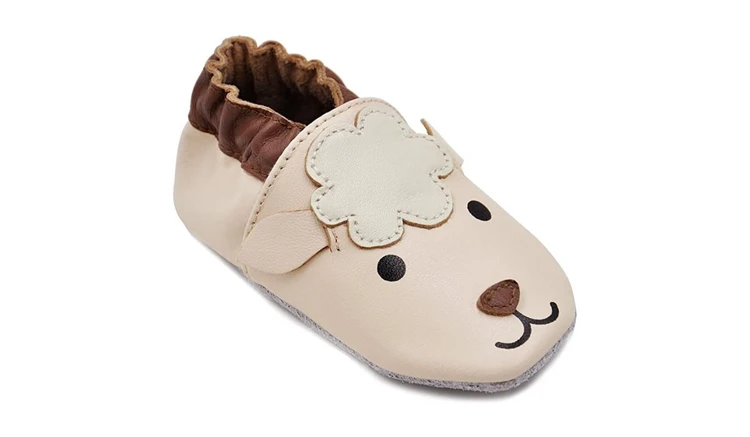
- Leather sole
- Made from soft, breathable leather in the sweetest designs — animals to rocketships and icecreams!
- Elasticated ankle
Splurge:

- Suede sole
- 100% leather
- Soft and neutral shades
- Elasticated on/off
Sneakers
Budget:
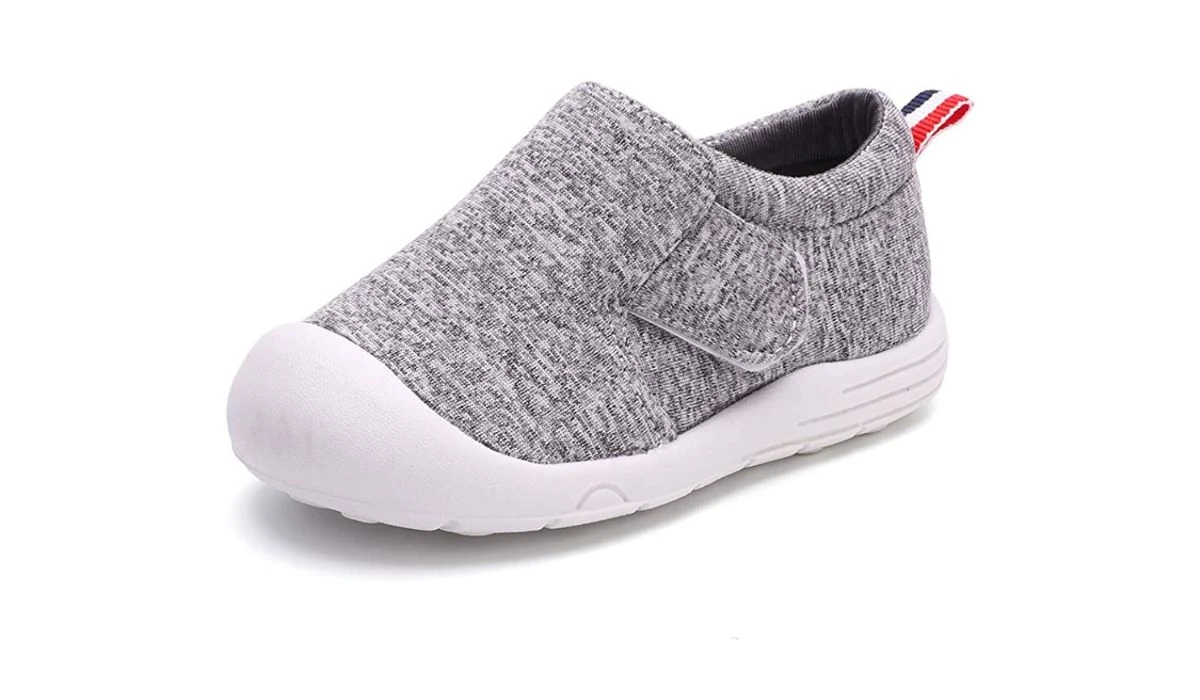
- Soft and lightweight non-slip sole
- Soft and breathable upper
- Fun prints for any occasion
Splurge:
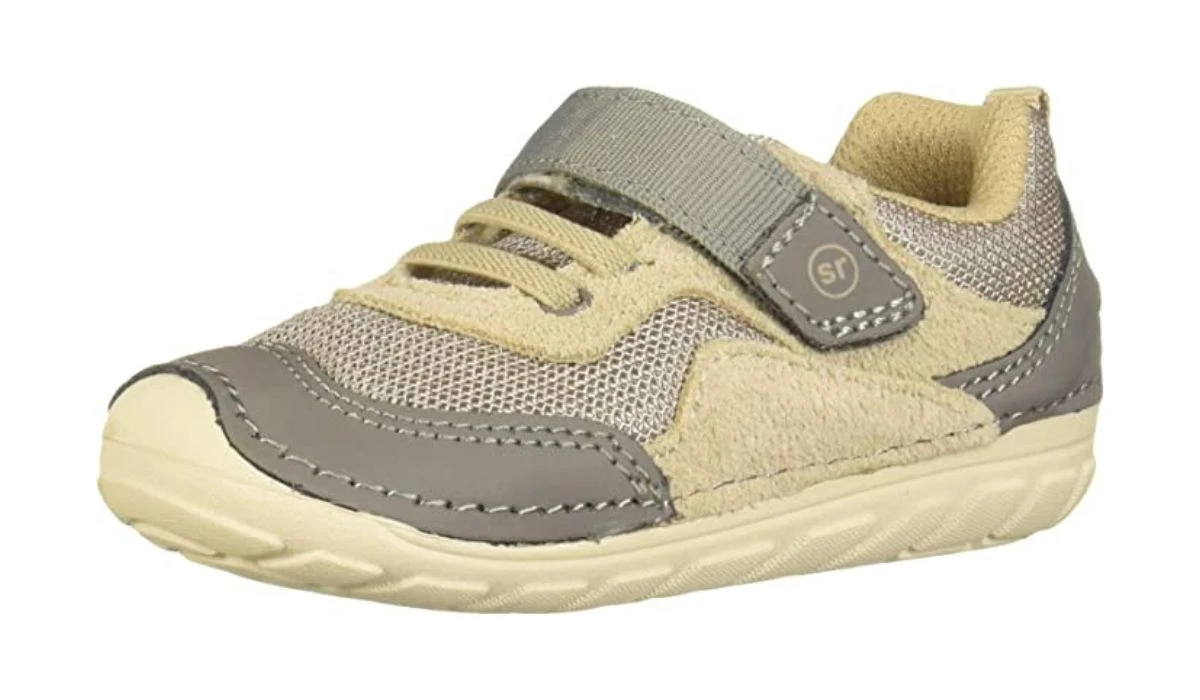
- Flexible non-slip rubber sole
- Memory foam footbed
- APMA approved
- Easy hook and loop closure.
Best rain boots and booties
Fleece
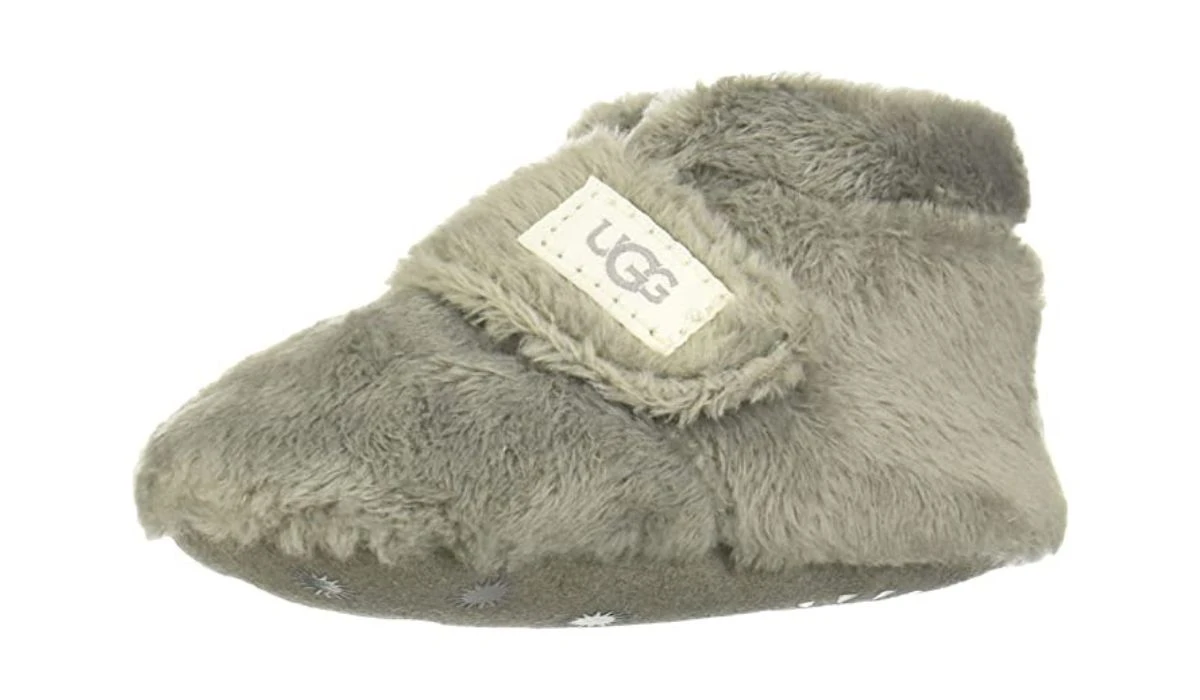
- Non-slip
- Warm, soft design
- Machine washable
Insulated
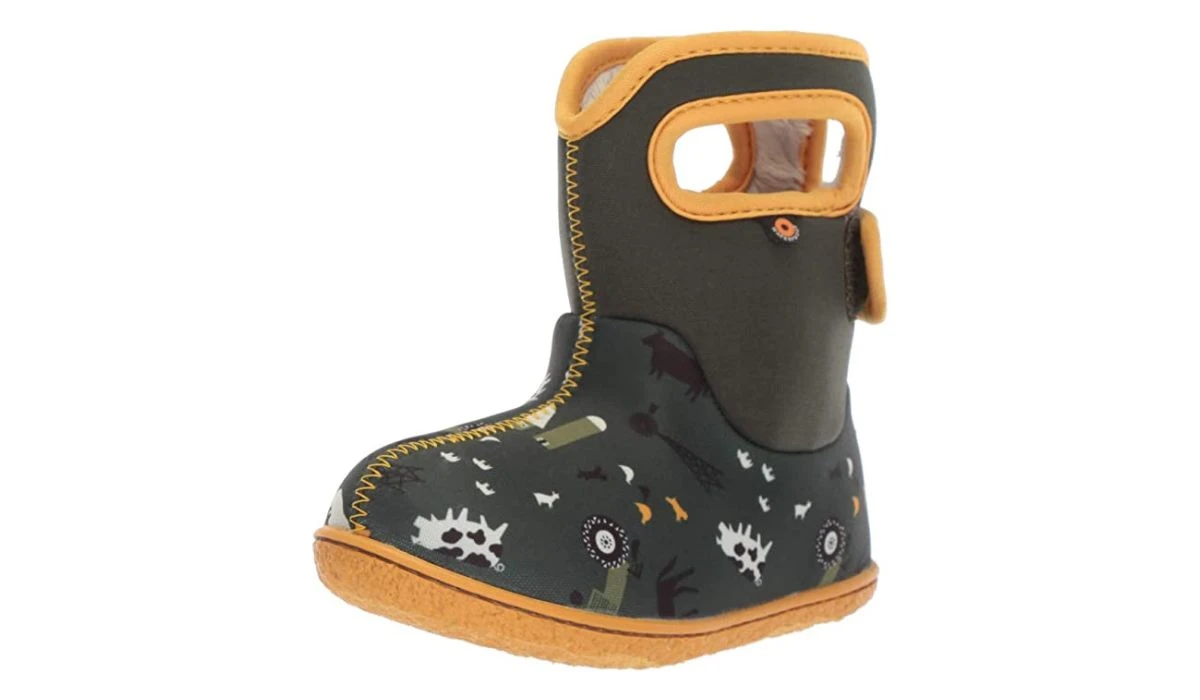
- Waterproof and lightweight with a soft plush lining for warmth
- Available in various cute designs
- Machine washable
- Handles for easy slip-on/off
How can I help my baby learn to walk?
There are tons of old wives’ tales about this, including the one that says babies learn to walk by wearing shoes.
This is just not true, and while we’d be nervous about disagreeing with Grandma face-to-face, the experts have spoken.
Keeping your baby shoeless may actually help them walk confidently.
Walking barefoot gives your toddler more feedback from the ground, which means they don’t have to look down as much as they would when wearing shoes.
And that’s a good thing because looking down can cause them to lose balance and fall over.
Barefoot walking also develops the muscles and ligaments of the foot, helps with good posture, and even improves proprioception (our sense of our bodies in the space and environment around us).
Important skills all!
Know that walking is just one of those developmental milestones that happen when they happen — usually somewhere between nine and fifteen months.
If your little one is taking a bit longer, rest assured, mama — they’ll get there in their own time.
And if you’re at all concerned, reach out to your healthcare provider.
Best shoes for babies learning to walk: the bottom line
Turns out, the best shoes for babies learning to walk are no shoes at all.
But for those times when you need them, flexible, breathable, non-slip options like our picks above are the way to go!
Now consider this your excuse to do some shoe shopping.
You’re welcome. 😉

